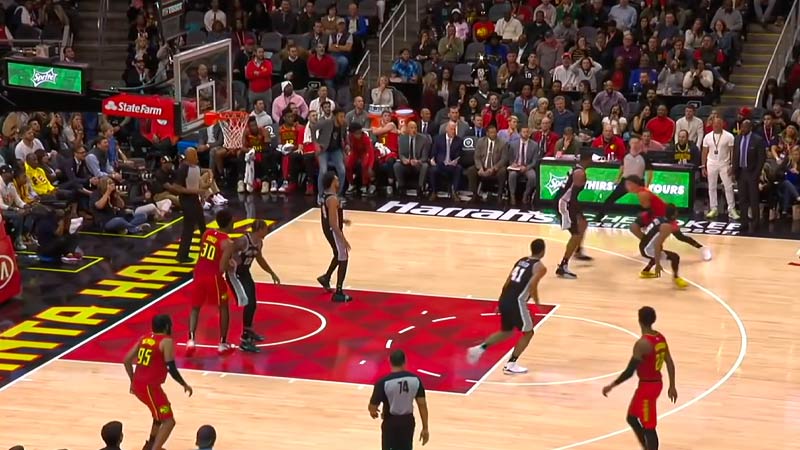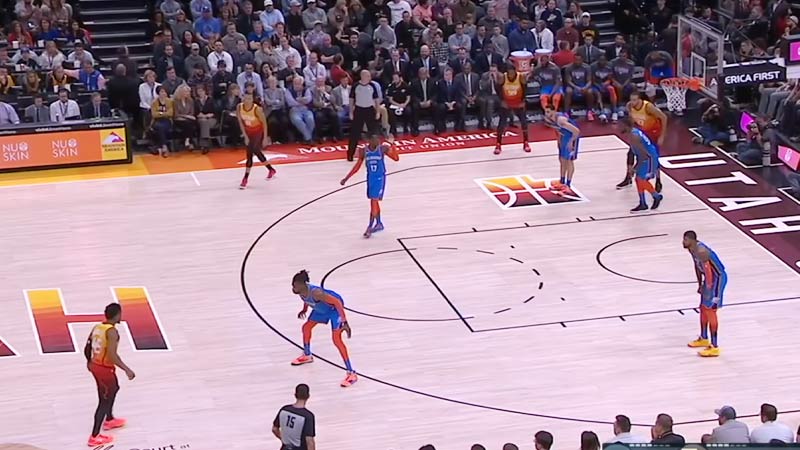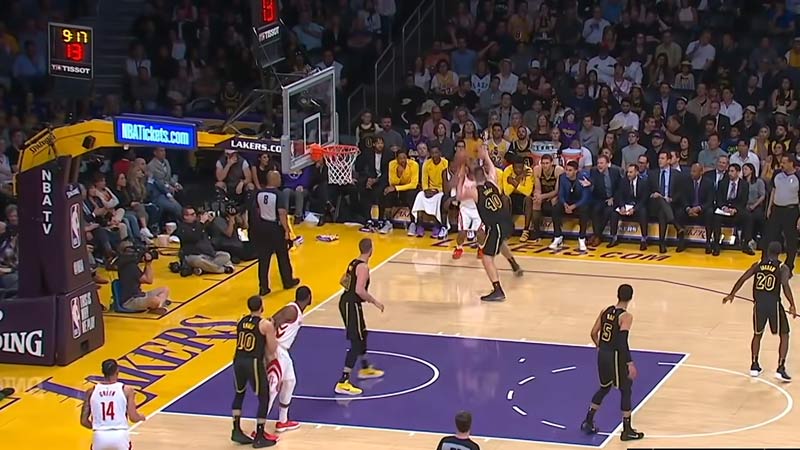Basketball is a sport that constantly evolves, and innovative defensive strategies play a significant role in shaping the game. One such strategy that has gained attention in recent years is the diamond press basketball defense, also known as the 1-2-1-1 press defense.
This aggressive full-court pressing tactic aims to disrupt opponents, create turnovers, and dictate the pace of the game.
In this blog post, we delve into the intricacies of the diamond press defense, providing insights, explanations, and answers to frequently asked questions to help you understand and appreciate this dynamic defensive approach.
What Is A Diamond Press Basketball?
The diamond press defense, also known as the diamond press, is a full-court pressing strategy used in basketball. It is designed to apply intense pressure on the opposing team and force turnovers by creating traps and denying passing lanes.
In the diamond press defense, players are positioned in a diamond-shaped formation on the court. Here’s a breakdown of player positions:
Point Guard (Front)
The point guard takes the front position of the diamond, guarding the player who is inbound passing or bringing the ball up the court. The objective of the point guard is to apply immediate pressure and force the ball handler toward the sidelines or corners.
Wings (Second Line)
Two players form a line behind the point guard, positioned diagonally toward the sidelines. These players aim to deny passing options, trap the ball handler, or intercept passes. They need to be quick and agile to cover multiple areas on the court effectively.
Back (Rear Line)
The final player is positioned at the back of the diamond, acting as the last line of defense. This player typically defends the middle of the court, intercepting long passes or guarding against fast breaks.
The primary goal of the diamond press defense is to create chaos, disrupt the opposing team’s offense, and force turnovers. Players in the press are aggressive and look for opportunities to trap the ball handler, double-team, or deflect passes.
The defense aims to deny easy passing options and force the offense into making hurried decisions or committing turnovers.
It’s important to note that variations of the diamond press defense may exist, as coaches may adapt the strategy to suit their team’s strengths, opponent’s weaknesses, or specific game situations.
Is 1-2-1-1 Press Defense and Diamond Press the Same Thing?
Yes, the 1-2-1-1 press defense and the diamond press are the same thing. Both terms refer to a specific full-court pressing defense strategy used in basketball.
The 1-2-1-1 press defense, also known as the diamond press, is a full-court press where players apply pressure on the opposing team immediately after a made basket or a successful free throw.
The defense is set up in a diamond shape, with one player (the point guard) at the front, two players forming a line behind the point guard, and another player at the back as the last line of defense.
While the terms “1-2-1-1 press defense” and “diamond press” are often used interchangeably, it’s worth noting that terminology can vary among different coaches and teams. However, the basic principles and objectives of the strategy remain the same.
The strategy of 1-2-1-1 Press Defense

The 1-2-1-1 press defense, also known as the diamond press, is a full-court pressing strategy that can be highly effective in disrupting the opposing team’s offense and creating turnovers. Let’s discuss the key aspects and principles of this defensive strategy:
Pressure on the Ball
The point guard, positioned at the front of the diamond, applies immediate pressure on the ball handler as soon as the ball is inbounded or brought up the court.
The objective is to force the ball handler towards the sidelines or corners, limiting their passing options and making it more difficult for them to initiate the offense.
Trapping and Double-teaming
One of the key features of the 1-2-1-1 press defense is the ability to trap and double-team the ball handler.
The two wings positioned diagonally towards the sidelines, work together to close off passing lanes and trap the ball handler in a corner or along the sideline. This can lead to turnovers or rushed passes that the defense can intercept.
Denying Passing Options
The wings in the second line of the diamond aim to deny easy passing options. They need to be quick and agile, capable of quickly closing out on open players and intercepting or deflecting passes.
By denying passing lanes, the defense can disrupt the offense’s rhythm and force them into making risky or forced passes.
Communication and Rotation
Effective communication and rotation are crucial in the 1-2-1-1 press defense. Players must communicate constantly to ensure proper coverage and alert teammates of potential traps or open passing lanes.
When a trap is initiated or a double-team occurs, other defenders must rotate to cover the areas left open by the trapping players, preventing easy scoring opportunities.
Last Line of Defense
The player positioned at the back of the diamond serves as the last line of defense. This player guards the middle of the court, intercepts long passes, and prevents easy baskets on fast breaks. They must have good anticipation skills and be able to quickly react to potential threats.
Timing and Discipline
Timing is crucial in the 1-2-1-1 press defense. Defenders must coordinate their movements and traps effectively to avoid leaving gaps in the defense. It’s essential to be disciplined and avoid unnecessary fouls or gambling for steals, as it can leave the defense vulnerable if the trap is not successful.
Transition Defense
If the 1-2-1-1 press defense does not result in a turnover or a steal, defenders must transition back to their half-court defense quickly. Players need to sprint back, communicate, and pick up their assigned opponents to prevent easy scoring opportunities for the opposing team.
The 1-2-1-1 press defense can be an aggressive and disruptive strategy, but it requires coordination, athleticism, and disciplined execution from the defensive players.
Coaches often employ this strategy to change the tempo of the game, create turnovers, and put pressure on the opposing team’s ball handlers and decision-making.
Benefits of Diamond Press Defense

The diamond press defense, or 1-2-1-1 press defense, offers several advantages for a team when implemented effectively. Here are some key advantages:
Disrupts Opponent’s Rhythm
The diamond press defense is designed to disrupt the opposing team’s offensive rhythm and flow.
By applying intense pressure on the ball handler and denying passing options, it forces the offense to make quick decisions and potentially commit turnovers. This disrupts their ability to run their set plays or execute their preferred offensive strategies.
Creates Turnovers and Steals
One of the primary objectives of the diamond press defense is to create turnovers and steals. By trapping and double-teaming the ball handler, intercepting passes, and denying easy passing lanes, the defense can force the offense into making mistakes.
This can lead to steals, fast-break opportunities, and easy scoring chances for the defensive team.
Generates Fast-Break Opportunities
When the diamond press defense successfully creates turnovers or steals, it often leads to fast-break opportunities for the defensive team.
With players already positioned near the opponent’s basket, they can quickly transition into offense and capitalize on the advantage of having numerical superiority. This can result in easy baskets and increase scoring opportunities for the defending team.
Controls the Tempo of the Game
The diamond press defense allows the defending team to control the tempo of the game. By applying constant pressure and forcing a fast-paced, chaotic style of play, it can disrupt the offensive flow of the opposing team and force them to play at a tempo they are uncomfortable with.
This can benefit the defending team by limiting the time the offense has to set up their plays and decreasing their efficiency.
Energizes the Team and Crowd
The diamond press defense is an aggressive and exciting strategy that can energize both the defensive team and the crowd. The intensity and constant pressure applied by the defense can create a sense of momentum and enthusiasm.
This boost in energy can inspire the defensive players to give maximum effort and motivate the team as a whole.
Frustrates Opposing Ball Handlers
The diamond press defense can be mentally and physically taxing for opposing ball handlers.
The constant pressure, traps, and denial of passing lanes can frustrate the primary ball handler and force them into making rushed decisions or committing turnovers. This can disrupt their confidence and disrupt the offensive flow of the opposing team.
Forces Quick Shots and Poor Decision-Making
The diamond press defense often forces the opposing team into taking quick shots and making poor decisions due to the time pressure and disruption caused by the defense.
This can lead to lower shooting percentages, rushed shots, and turnovers. By forcing the offense out of their comfort zone, the defense increases their chances of success.
The diamond press defense offers the advantages of disruption, creating turnovers, generating fast-break opportunities, controlling the tempo, and energizing the team.
However, it requires disciplined execution, effective communication, and athleticism from the defensive players to maximize its benefits.
Drawbacks of Diamond Press in Basketball
While the diamond press defense (1-2-1-1 press) can be effective, it also has some potential disadvantages that coaches and players should consider:
Vulnerability to Long Passes
The diamond press defense can leave the back of the defense exposed, making it susceptible to long passes over the top.
If the opposing team successfully breaks the initial press and manages to make accurate long passes, they can create fast-break opportunities or open shots near the basket.
Fatigue and Conditioning
The diamond press defense requires constant movement, trapping, and exerting pressure on the ball handler.
This high-energy style of defense can be physically demanding and potentially lead to fatigue, especially if players are not well-conditioned. As the game progresses, players may tire, which can impact their effectiveness in executing the press defense.
Risk of Foul Trouble
The diamond press defense often involves aggressive trapping and double-teaming, increasing the risk of fouls.
If defenders mistime their traps or get overly aggressive, they may commit fouls, leading to free-throw opportunities for the opposing team or even foul trouble for key defensive players.
Strategic Adjustments
Skilled opposing coaches and teams can make adjustments to counter the diamond press defense. They may employ quick ball movement, utilize backdoor cuts, or employ specific offensive sets to exploit gaps in the press and create scoring opportunities.
Coaches using the diamond press defense must be prepared to make timely adjustments and adapt their strategy based on the opponent’s countermeasures.
Defensive Rebounding Challenges
The diamond press defense can sometimes struggle with defensive rebounding due to its aggressive nature.
When defenders are focused on trapping and creating turnovers, it can leave gaps on the defensive glass. Opponents may have opportunities for offensive rebounds and second-chance points if the defense fails to secure rebounds effectively.
Complexity and Communication
The diamond press defense requires good communication and coordination among defenders. Players must communicate effectively to execute traps, rotations, and coverages.
If there is a breakdown in communication or if defenders are not on the same page, it can lead to defensive breakdowns and open scoring opportunities for the opposing team.
Risk vs. Reward Balance
The diamond press defense is a high-risk, high-reward strategy. While it can lead to turnovers and disruption, it also carries the risk of giving up easy baskets if the press is broken.
Coaches and teams must assess whether the potential benefits outweigh the potential drawbacks based on their roster, opponents, and game situations.
FAQs
What is the diamond press defense, and how does it work?
The diamond press defense, or 1-2-1-1 press defense, is a full-court pressing strategy employed in basketball. It features a diamond-shaped formation with one player at the front (point guard), two players forming a line behind the point guard (wings), and one player at the back (rear line).
The defense applies immediate pressure on the ball handler, aims to trap, deny passing options, and create turnovers by forcing the offense into making rushed decisions.
What are the key objectives of the diamond press defense?
The primary objectives of the diamond press defense are to disrupt the opposing team’s offense, force turnovers, and control the tempo of the game.
By applying intense pressure and trapping the ball handler, the defense aims to create chaos, limit passing options, and provoke hurried plays that can lead to steals, deflections, or turnovers.
How do players in the diamond press defense coordinate their movements?
Communication and coordination are vital in executing the diamond press defense effectively. Players must communicate constantly, alerting teammates of traps, rotations, or open passing lanes. Timing and discipline are essential to avoid leaving gaps in the defense.
When traps or double-teams occur, players must rotate to cover open areas, ensuring there are no easy scoring opportunities for the offense.
What are the potential advantages of implementing the diamond press defense?
The diamond press defense can be a game-changer for teams. Its aggressive nature can disrupt the rhythm of opposing offenses, create turnovers, and lead to easy scoring opportunities.
The defense can generate momentum shifts, demoralize opponents, and control the pace of the game. Additionally, the diamond press defense can be an effective strategy to catch up in games when trailing by a significant margin.
Are there any specific countermeasures or weaknesses associated with the diamond press defense?
While the diamond press defense can be highly effective, it has some potential weaknesses. Skilled opponents can exploit gaps in the defense by using quick ball movement, backdoor cuts, or specific offensive sets.
Long passes over the top can also be a vulnerability if the defense fails to prevent them. Additionally, the aggressive nature of the defense can lead to fatigue, foul trouble, or defensive rebounding challenges if not executed with discipline and proper conditioning.
Wrapping Up
The diamond press basketball defense offers an exciting and dynamic approach to disrupt opponents and create turnovers.
With its aggressive trapping, denial of passing options, and intense pressure on the ball handler, this strategy can shift the momentum of the game and provide teams with a competitive edge.
While it requires coordination, communication, and disciplined execution, the diamond press defense can be a potent weapon in the hands of a well-prepared team.
By understanding its principles, objectives, and potential challenges, coaches and players can implement and adapt this defensive strategy to suit their team’s strengths, exploit opponents’ weaknesses, and elevate their performance on the court. Best wishes.







